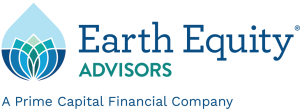As the world population continues to grow, our natural resources continue to dwindle. But thankfully, organizations and individual investors around the world are finally doing something about it – taking action to reduce greenhouse gas emissions, fight climate change, and prioritize the utilization of renewable energy.
In 2019, renewable energy accounted for 11.4% of total U.S. energy consumption. And newly elected President Joe Biden plans to invest another $2 trillion in clean-energy initiatives over the next four years to align with the Paris Agreement objectives of zero-carbon solutions by 2030.
What is Renewable Energy?
Renewable energy, or clean energy, is energy derived from natural sources or processes that are continually replenished on a human timescale, and include sources like sunlight, wind, rain, tides, waves, and geothermal heat. With more widespread use of energy from renewable sources, we can lower our future carbon dioxide (CO2) emissions, which is the primary cause of global warming.
Often thought of as a new technology, utilizing the power of nature for heating, lighting, and transportation isn’t a new thing at all. We have used windmills to grind grain and wind to navigate boats for centuries, but since the 1600s, we have unfortunately looked to easier, cheaper, and nonrenewable energy sources such as oil and coal.
With renewables becoming an increasingly important power source and now accounting for more than one-eighth of U.S. power generation, we have gotten increasingly more efficient at capturing and retaining renewable energy. And this expansion is happening on both a macro and micro level, from solar panels on single homes to giant offshore wind farms and even entire communities working together to utilize and rely on renewable energy. As the need for renewable energy continues to skyrocket, modernizing America’s electricity grid will be crucial, making it smarter, more secure, and an integral part of the infrastructure across regions.
The State of the Renewable Energy Industry
Fossil fuels and many other nonrenewable resources release greenhouse gases into the atmosphere, warming up the planet and contributing to climate change. Due to this, and the fact that there is a limited amount of nonrenewable energy sources, the demand for green energy is rising.
The energy industry is composed of three sectors: power, heat, and transport.
- In the power sector: wind turbines, solar energy, geothermal, hydroelectric, etc.
- The heat sector via non-renewables (e.g., natural gas) and renewables (e.g., geothermal heating systems, etc.)
- The transport sector via non-renewables (e.g., gasoline, etc.) and renewables (e.g., electric, hydrogen, electric vehicles, etc.)
According to the 2018 report by the International Energy Agency (IEA), the power mix is transforming so drastically that the global share of renewables in generation is expected to rise from 25% to 40% by 2040. Finally, organizations are starting to feel the pressure to take responsibility for the impact of their operations. According to a Ceres report, 63% of Fortune 100 companies have set one or more clean energy targets, so with the ample amount of opportunities available, the time to invest is now.
Why Invest in Renewable Energy?
Renewable energy has the power to reduce greenhouse gas emissions and contribute to a cleaner, more sustainable environment. These energy sources are not only beneficial for the planet, but also provide businesses with operational efficiencies and build resiliency for the future – both of which promote long-term business success.
A common concern is that investing in these types of solutions is more of a charity than a means to grow personal wealth. That may have been true a couple of decades ago. However, we have seen the resiliency of renewable energy exemplified throughout the COVID-19 pandemic. In their 2020 Global Energy Review, IEA states that while demand for energy globally fell by 3.8% in the first quarter of the year, renewable energy continued to see growing demand. So, while the world has a long road of recovery in innumerable ways from COVID-19, we can definitively say that renewable energy certainly passed the pressure test.
How to Invest in Renewable Energy
1. Directly Invest in Renewable Energy Projects – Investors building resilient portfolios can achieve diversification through the allocation of renewable energy assets. Solar and wind are the two of the fastest-growing sectors with the largest market share as thousands of business operations across the world prioritize renewables, leading to a higher demand for the products of green energy companies.
2. Invest in Clean Energy Mutual Funds or ETFs – Mutual Funds and Exchange-Traded Funds (ETFs) allow investors to get involved with multiple companies that directly support clean energy through the use of renewable resources or energy efficiency. This option appeals to investors wishing to diversify their portfolio among a many companies involved in the renewable energy industry.
3. Buy Shares of Renewable Energy Companies – For those investors with higher risk tolerance, directly buying shares of companies that focus entirely on renewable energy is an option. The advantage of buying shares of renewable energy companies provides you with the flexibility of directly supporting companies that align with your values.
Risk & Benefits
Similar to the characteristics of any niche market, stock prices related to the clean energy industry are highly volatile due to the influence of both headwinds and tailwinds that can affect the industry. Uncertainty around innovative technologies in emerging markets can also be the cause of large stock price swings in a short period of time.
According to the U.S. Environmental Protection Agency (EPA) website, there are policies in place that provide states with resources to support the growth of the industry. However, there are still a number of barriers to the renewable energy industry including lack of interconnection standards, lack of transmission, utility rate structures, and barriers in environmental permitting. It’s important when evaluating risk to understand your own personal financial goals along with your risk profile, and consulting a professional who is experienced in clean energy investments can save you hours of research.
It’s clear that demand for clean energy will continue to grow and investors have the opportunity to play a fundamental role in the shift of energy consumption. But you can also support the creation of jobs as The International Renewable Energy Agency predicts that the number of renewable energy jobs worldwide could reach 42 million jobs by 2050. Enhancing community infrastructure through the support of renewable energy projects benefit not only your pocket, but also benefits local communities around the world.
The Earth Equity Advisors Approach
Since 2004, Earth Equity Advisors has specialized in Sustainable, Responsible, and Impact (SRI) investing and we perform the due diligence necessary to help you invest in a way that is aligned with your values. Our Impact X-Ray can help you look under the hood of your current investments and our team can guide you through the steps to divest from negative impact investments and reinvest in positive solutions.


